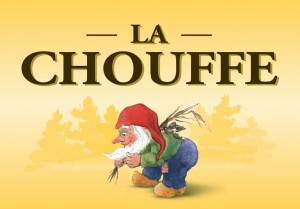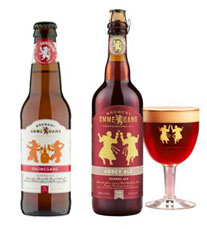
In the last 10 years alone, the company has bought Brewery Ommegang, Brasserie d’Achouffe, Brouwerij Liefmans and Brouwerij De Koninck.
Now, however, the Belgium-based brewing company is looking to strengthen its position in the U.S. craft beer market by purchasing other American breweries.
“We would like to acquire two or three U.S. craft breweries over the next five years,” Simon Thorpe, the president and CEO of Duvel USA and Brewery Ommegang told Brewbound.com. “We’re looking to the U.S. to be the engine of our group growth over the next 10 to 20 years. Part of that will be achieved by growing the Ommegang and Duvel brands but part of it will also come by finding other breweries that fit our portfolio.”
As a group, Duvel Moortgat produces and sells about 700,000 hectoliters (about 637,000 barrels) of beer annually, but less than 70,000 hectoliters were sold in the U.S. last year. Thorpe said the company would like to grow that to 500,000 hectoliters over the next decade.
“We view ourselves as a craft brewer that happens to be based in Europe and has a brewery in the U.S.,” he said. “We want to build our existing business, but we are also looking at how we can make a U.S. business that is 500,000 hectoliters and complements the volume we have in Europe. Some of that will come from Ommegang, Duvel and acquisitions.”
Thorpe said he started with a list of 300 potential acquisition targets, then narrowed it to a group of 50, about 10 of which are “very interesting,” he said.

Duvel is looking for craft breweries that have a long growth runway, he said.
“Can they provide leverage for our brands or have they got the potential to scale,” asked Thorpe. “They need to be worthwhile. We wouldn’t go buy a brewery that is 2,000 barrels unless it has some sort of special technology.”
Duvel will also be looking to strengthen its geographic position, as well, Thorpe said. With its home brewery in New York, the company could benefit by adding a brand on the West Coast, where its wholesale relationships aren’t quite as strong.
“We know that we have very good relationships with our wholesalers and retailers in a line upwards from Atlanta through Maine,” he said. “So we’re looking at acquisitions from two directions. Can we help someone grow in the Northeast and is there supply chain leverage on the West Coast that can strengthen our position?”
Thorpe maintains that Duvel isn’t looking to consolidate brands in an effort to achieve cost-side synergies. Instead, the company is looking to maintain the integrity of its acquired brands and aims for revenue growth.
“When we approach acquisitions, we look at it as an ongoing business,” he said. “We are looking to develop the business, alongside the others we already own, over the long term. That might mean looking at a brand that is only distributed in 9 or 12 states and asking if we can help build that out to be national.”
Duvel is looking for breweries that complement the company’s existing image as a portfolio of luxury brands, he said.
“We are not interested in brands where margins and pricing is low,” Thorpe said. “We are only interested in the luxury end of the market. We are looking for premium, high-end, beautiful brands. We believe that over time, if the quality is good, you will survive.”
Strategic Pricing
Thorpe counts Duvel Moortgat among the few “strategic buyers” that are looking to develop businesses over a long period of time and are willing to pay higher premiums to do so.
“A strategic investor in this market will pay between 8 and 14 times EBITDA,” said Thorpe. “A financial buyer might only pay 6 or 8 times. They are looking for a much quicker investment.”
Large beer conglomerates like Anheuser-Busch InBev and MillerCoors would be among those financial investors looking to make a faster return and they’ve already demonstrated their interest in craft through acquisitions like Goose Island and Crispin Cider, respectively. But what makes Duvel Moortgat a more attractive option, in Thorpe’s eyes, is its commitment to maintaining the provenance and pre-existing structure at any craft brewery it would acquire.

Thorpe said he’s had a number of informal discussions with U.S. craft brewers and he expects many of them to finalize deals with either Duvel Moortgat or other private equity and financial buyers.
Portfolio additions aside, Duvel USA is also exploring other ways to grow equity in its own Ommegang and Duvel brands through two concepts: a new ‘Ommegang Foods’ business and Duvel and Ommegang restaurant chains in the U.S.
Duvel Moortgat is currently building out infrastructure for branded ‘Duvel’ and ‘Ommegang’ restaurants and Thorpe confirmed that the company is in talks with three potential management groups for licensing and franchise opportunities.
“I think it is a real exciting opportunity for us,” Thorpe said. “The discussions are active at the moment and we think it is perfectly reasonable to find a partner within the next six months.”
Ommegang Foods, much like a similar concept launched by Dogfish Head Craft Brewery in May, could include the various cheese, ice cream and mustard offerings all being made with Ommegang beer and currently being served at the brewery café in Cooperstown, New York.
“The idea is to find someone who has good connections with high-end deli and supermarket chains and can help us build out a separate, stand-alone business model,” said Thorpe.
Duvel Moortgat will make financial investments in the joint ventures with the aim of promoting the Duvel and Ommegang brands beyond just the liquid.
“It is a tool to build our brand reputation and encourage customers to buy more beer,” said Thorpe. “It just happens to be something that is self-financing.”

To help bolster Ommegang’s performance, the company plans to continue emphasizing its seasonal portfolio and has developed a new grisette style recipe for next spring. They’ll also discontinue production of BPA, a Belgian-style pale ale, and replace it with a hoppier, more sessionable year-round variety called “Hop House.”
“Craft beer is now perceived as better, less expensive and local,” Thorpe said. “Craft has a warm, affectionate, vibrant character to its brands. Imports are a little more distant. They are from abroad and there is a relationship to a beer made here in America that just doesn’t exist for an import brand.”